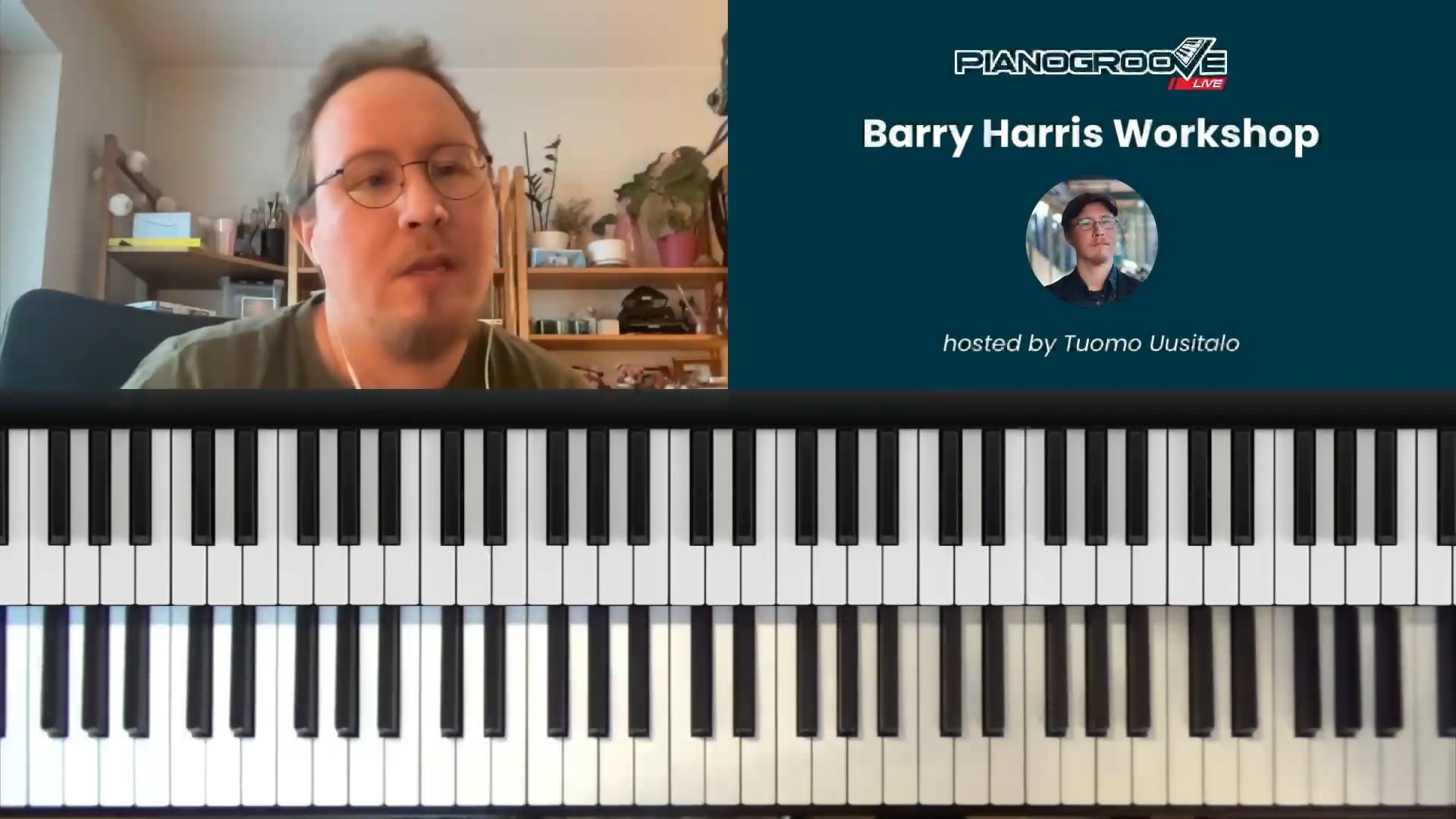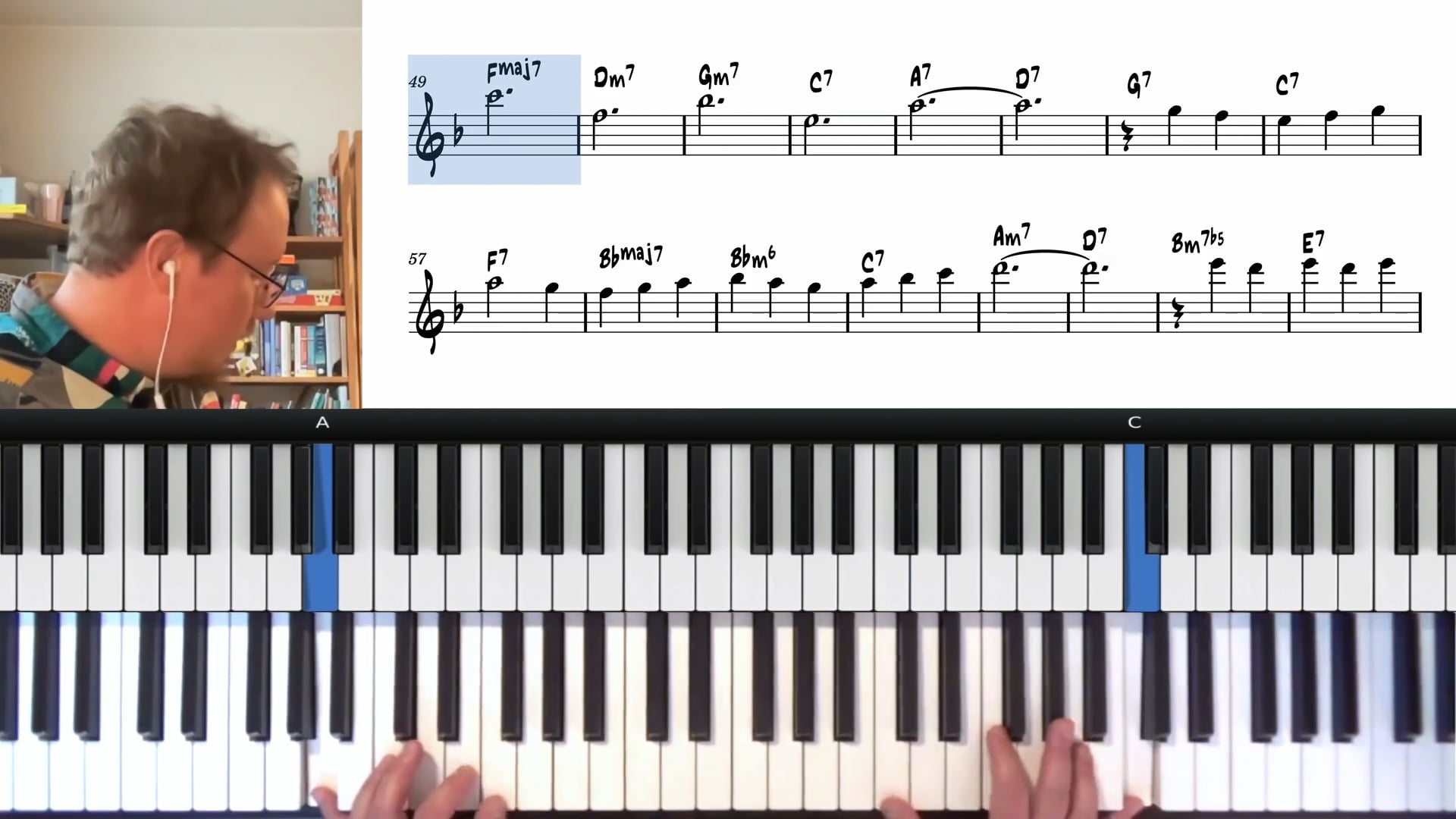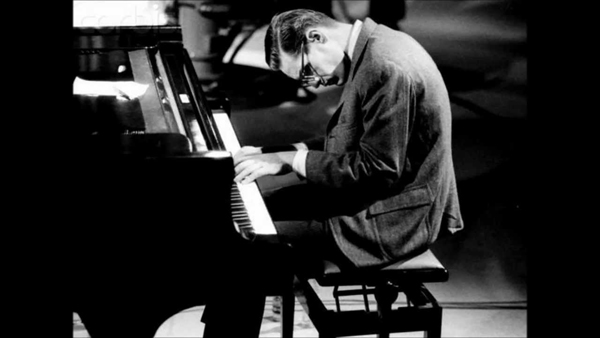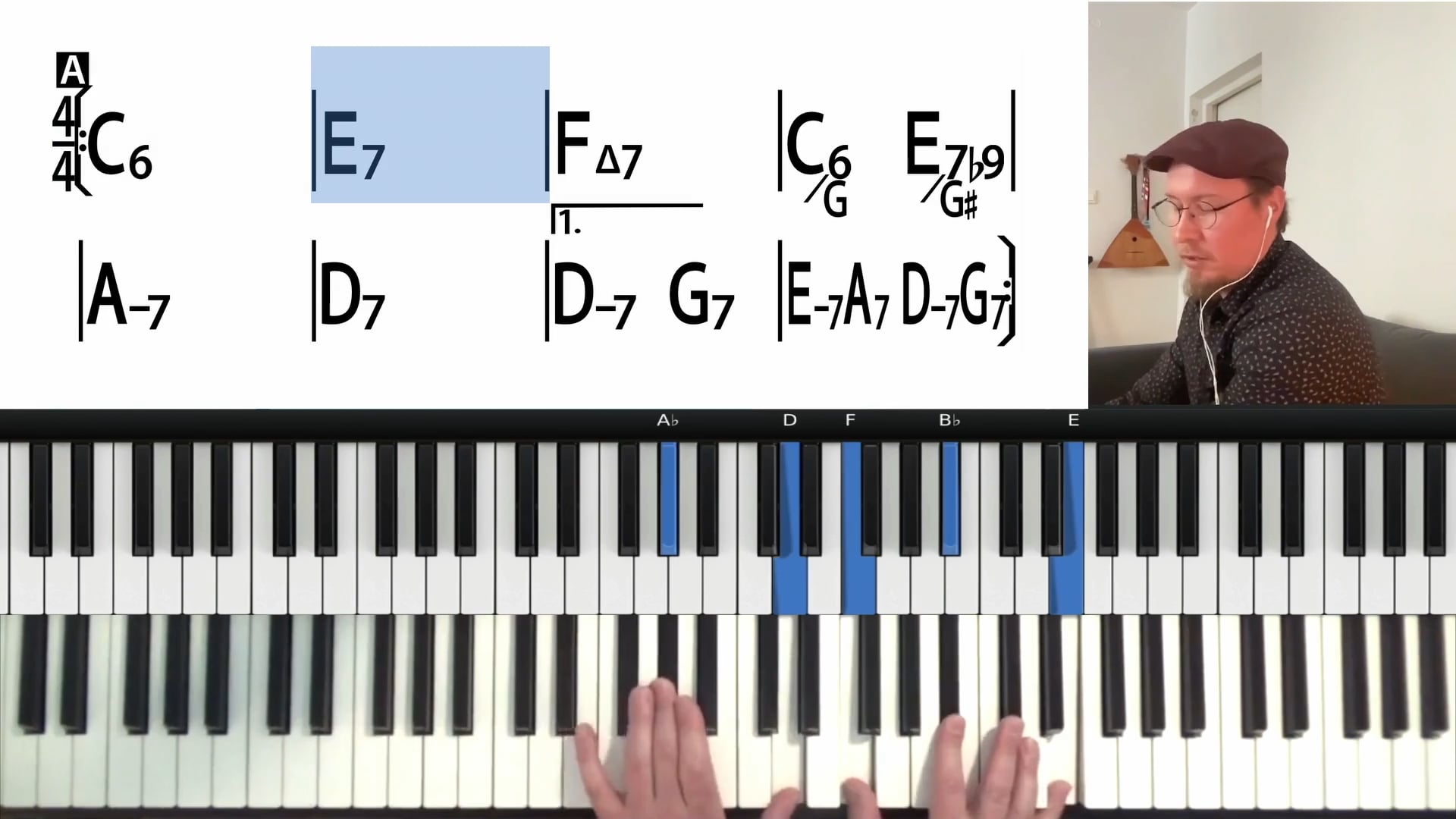

Tuomo Uusitalo
Tuomo is an award-winning pianist, composer, arranger and educator. Having released two albums as a leader, he has established himself in the New York jazz scene and continues touring internationally both as a leader as well as sideman.
Seminar Description
Seminar Description
Barry Harris Voicings Workshop
Welcome to our deep dive into Barry Harris voicings, an essential approach to jazz harmony that provides a systematic way to harmonize melodies and navigate chord progressions. This lesson focuses on the Barry Harris approach to voicings, how these concepts relate to jazz standards, and practical applications for chord movement and improvisation.
By the end of this lesson, you will understand how Barry Harris voicings are constructed, how to apply them to II-V-I progressions, and how to modify them for different harmonic situations.
Understanding Barry Harris Voicings
Barry Harris voicings are based on sixth chords and diminished chords, which alternate to create a smooth, flowing harmonic structure. This concept is not unique to Barry Harris—similar ideas appear in classical music and bebop piano styles—but Harris is credited for formulating a method that makes these ideas accessible for jazz musicians.
The foundation of Barry Harris voicings is a major or minor 6th chord combined with a diminished chord. This structure allows for rich harmonic movement while maintaining a strong sense of tonal gravity.
-
Example in C Major:
- C6 (C-E-G-A)
- Diminished (D-F-Ab-B)
- Together, these two chords allow smooth harmonization of the C major scale.
- Example in C Minor:
- C-6 (C-Eb-G-A)
- Diminished (D-F-Ab-B)
- This structure follows a similar principle but in a minor context.
Applying Barry Harris Voicings to II-V-I Progressions
In jazz, the II-V-I progression is a fundamental harmonic sequence. Barry Harris voicings provide a systematic way to voice these chords, ensuring smooth voice leading and a bebop-oriented sound.
Step 1: Harmonizing the II Chord
For a II-V-I in C major (D-7 to G7 to Cmaj7), we can use:
- D-7 as an F6 chord (F-A-C-D)
- The related diminished chord (G# diminished: G#-B-D-F)
- This creates a flowing harmonic motion between D-7 and G7.
Step 2: Harmonizing the V Chord
For G7, we can use:
- G6 (G-B-D-E)
- The related diminished chord (A# diminished: A#-C#-E-G)
- This produces smooth harmonic motion into Cmaj7.
Step 3: Resolving to I
For Cmaj7, we return to our C6 voicing (C-E-G-A) and its related diminished chord.
Putting It Together
A Barry Harris-style II-V-I progression in C major:
- D-7 → F6 / Related Diminished
- G7 → G6 / Related Diminished
- Cmaj7 → C6 / Related Diminished
By alternating sixth chords and diminished chords, we achieve a flowing bebop sound.
Dominant Chords and Their Variations
Barry Harris voicings also provide a unique way of approaching dominant chords, including altered dominants and tritone substitutions.
The Relationship Between Diminished Chords and Dominants
One key insight from Barry Harris’ method is that the same diminished chord can be part of four different dominant chords. This means:
- A diminished chord can function as a V7 chord with a b9.
- The tritone substitute of a dominant chord can use the same voicing.
- This allows for quick reharmonizations and smooth chromatic movements.
Example: G7 and Its Substitutions
- The G7b9 chord (G-B-D-F-Ab) can also function as:
- Db7 (Tritone substitution for G7)
- E7 (Secondary dominant)
- Bb7 (Common substitution in bebop)
This means you can use one voicing across multiple dominant chords, opening up chromatic passing movements and harmonic flexibility.
Harmonizing Melodies Using Barry Harris Voicings
One of the most powerful applications of Barry Harris voicings is harmonizing melodies with block chords. This approach is commonly associated with pianists like George Shearing and Oscar Peterson.
How to Harmonize a Melody
- Identify the underlying chord (major or minor 6th)
- Alternate with the related diminished chord
- Double the melody in the left hand for a “block chord” effect
- Modify notes where necessary to fit the melody smoothly
For example, in a melody like "There Will Never Be Another You", you can:
- Use C6 / Related Diminished for C major parts of the melody.
- Switch to G6 / Related Diminished for variety and different color.
- Alter certain notes using the replace, add, or skip approach.
Practical Guidelines for Using Barry Harris Voicings
Since melodies do not always fit perfectly within a strict sixth chord + diminished chord structure, we can use three practical guidelines:
-
Replace the highest note with the melody note – This keeps the harmonic structure intact while accommodating the melody.
-
Add notes to enrich the voicing – This allows for fuller sounds and greater harmonic flexibility.
- Skip certain notes to simplify voicings – In some cases, removing notes helps prevent overly dense or cluttered harmony.
Practice Tips
1. Harmonize Scales with Barry Harris Voicings
- Play a major or minor scale while alternating between a 6th chord and its related diminished chord.
2. Apply to Simple II-V-I Progressions
- Practice D-7 to G7 to Cmaj7 using Barry Harris voicings.
- Experiment with different dominant variations (e.g., altered, tritone subs).
3. Try Block Chord Harmonization
- Take a simple melody and harmonize every note using Barry Harris voicings.
- Use both hands to achieve a George Shearing-style block chord sound.
4. Experiment with Tritone Substitutions
- Play a II-V-I, but substitute the V chord with its tritone equivalent.
5. Transpose Everything to Different Keys
- Practicing in multiple keys is essential for mastering this approach.
Summary
Barry Harris voicings offer a systematic way to harmonize melodies and navigate chord changes. By alternating sixth chords and diminished chords, we can achieve smooth, bebop-style harmonies that work across a variety of jazz contexts.
Understanding how to apply these voicings to II-V-I progressions, dominant chord variations, and melody harmonization will significantly enhance your jazz piano playing.
Let me know in the forum if you have any questions or need help applying this to a specific tune. Happy practicing! 🎹







What is special or unique about a 6th chord? As I understand it, the 6th tone functions as a 13th in a dominant chord. or as the inversion of its relative minor or as part of a 6/9 chord. But who decided on a specific chord with a 6 on the top?
Hi Jacqueline, thank you for writing!
6th note in a chord works as an additional note to bring colour; 6th in a major chord gives a bit warmer sound than the major 7th, and 13th in a dominant brings a nice “egde” to the chord, as it forms minor2nd (or major7th) interval with the dominant 7th.
The reason why the 6th is a big deal in these voicings is that the chord tones together with the related diminished chord tones cover the entire scale, so harmonising melodies is very simple with the Barry Harris voicings.
See the attached document for further info :)
All the best,
-Tuomo
Thank you!